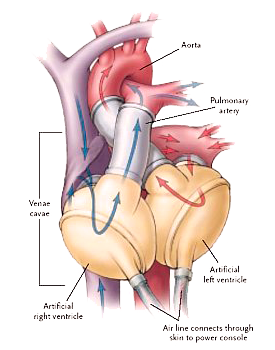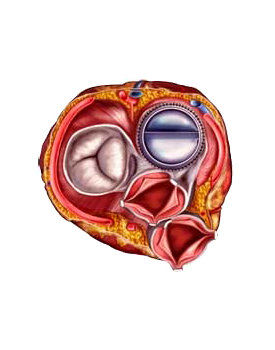Cardiovascular Disease
Cardiovascular Disease is considered to be the most common cause of morbidity and mortality in individuals with peripheral vascular disease (PVD).
Cardiovascular Disease is considered to be the most common cause of morbidity and mortality in individuals with peripheral vascular disease (PVD). Among patients who have undergone lower limb amputation as a result of PVD, the prevalence of concomitant cardiovascular disease may be as high as 75%. Several conditioning training programs have been developed to improve the cardiovascular fitness of patients with dysvascular amputation, the results of which have been favorable. These assessment and intervention strategies have extensive applicability in the clinical management of patients with dysvascular amputation.
Comorbid heart disease may complicate the post amputation course of recovery, delay initiation of rehabilitation training, and inhibit the achievement of maximal functional independence. In medicine, comorbidity (literally “additional morbidity”) is either 1 – The presence of one or more disorders (or diseases) in addition to a primary disease or disorder; or 2 – The effect of such additional disorders or diseases. A variety of methods have been used to assess cardiac status and risk in amputation patients undergoing physical training ; these have included clinical evaluation, resting electrocardiography, and continuous dynamic electrocardiography during either standard physical therapy exercise or adapted ergometry (measurement of the physiologic effects of exercise, using standard equipment).
Recent findings reveal striking differences by etiology (the study of the causes) in the rate of limb loss. In 1996, the rate of dysvascular amputations was almost 8 times greater than that of trauma-related amputations, the second-leading cause of limb loss. Amputations due to malignancy (state of being cancerous) occurred at significantly lower rates (0.35 per 100,000 persons in 1996).


Artificial Limbs
Prosthetic Legs or Arms; Prostheses can help people with leg and/or arm amputations get around more easily. Prosthetic Devices mimic the function and, sometimes, even the appearance of a real body parts. Some people may require a cane, walker, or crutches to increase stability while walking, while others can walk, and even run without encumbrance.
Risk of Amputation
Overall, the risk of amputation seems to increase with age for all etiologies, and for both racial groups and both sexes, although the rate of increase was especially high among blacks having dysvascular amputations. & nbsp;About 1 percent of blacks aged 85 or older had an amputation due to vascular disease in 1996. Men were also generally at higher risk for limb loss than women, especially in trauma-related amputations. These results reflecting a higher male-to-female ratio in dysvascular and trauma-related amputation rates is consistent with results reported in a number of other studies.
Many factors may have contributed to the observed increase in the incidence of amputations due to vascular disease. Increased prevalence of diabetes, smoking, hypertension, and hypercholesterolemia; all are important risk factors for peripheral vascular disease and amputation.
Cellulitis, Sepsis & Poor Blood Flow
Dysvascular amputations are often the final common sequel in a variety of clinical pathways. The development of a foot ulcer that won’t heal due to poor circulation, for example, often results in limb amputation. Severe, unremitting, vascular limb pain occasionally results in amputation. Cellulitis in a foot with limited blood supply, a potentially life-threatening condition, may also prompt a limb amputation, similar to an acute arterial thrombosis or overwhelming sepsis that results in distal limb infarction. Cellulitis is an acute spreading bacterial infection below the surface of the skin characterized by redness (erythema), warmth, swelling, and pain. Cellulitis can also cause fever, chills, and “swollen glands” (enlarged lymph nodes). Cellulitis is also a clinical diagnosis based on the spreading involvement of skin and subcutaneous tissues with erythema, swelling, and local tenderness, accompanied by fever and malaise.
Design, structure, and fitting an orthosis can be a complex process.
3 Steps to Create an Orthosis
-
1
Assessment
Medical, physical, bio-mechanical, muscle strength, proprioception, and sensation
-
2
Design & Manufacturing
materials, construction, suspension, and cosmesis
-
3
Fitting and Evaluation
anatomical fit, function, easy to don/doff, comfortable to wear